Hi folks,
In the prior issue we looked at the behavioral elements of trust and distrust. In this issue, we look a little deeper into the mental models that support our perceptions of trust and distrust. In digging a little deeper, we can reveal that it is common for executive leaders as well as executive coaches to misunderstand what is trust beyond something that either exists or does not exist between two people. As an executive coach, I join Robert C. Solomon and Fernando Flores’ existentialist approach to trust. In their view, trusting is a state of being where it is something we consciously do, make, create, build, maintain, and “sustain with our promises, our commitments, our emotions and our sense of our own integrity.” (p. 5) As such, not only can we increase our self awareness and effectiveness as coaches, we can increase the self awareness and effectiveness of the executive leaders that we coach by having a much deeper understanding of what is trust and that we individually and collectively create it.
I suspect that the prior month’s article combined with this will bring to mind how do you create trust and an environment for trust to truly develop versus creating techniques that guide you through a process without getting to the more core issues such as self distrust.
Feedback is appreciated. If you enjoyed the newsletter, please pass it on to a friend or colleague.
Respectfully,
Herb Stevenson
Herb Stevenson, CEO/President
Cleveland Consulting Group
Trust: A Self-Examination for Executive Coaches and Leaders
Herb Stevenson, CEO
Cleveland Consulting Group, Inc.
“Trust is a many splendored thing” may seem like an odd way to start this article. Typically, we tend toward a perspective that trust either exists or it does not. We tend to act as if it is a passive process based on our experiences with other people, be they bosses, peers, direct reports, spouses or friends. It becomes an active experience when something drastically changes our perception; i.e. we become fonder or disappointed, often experiencing it as a complete reframe of our self, our perception and the other person.
When I took a deeper examination, I returned to my gestalt and existential roots to get a clearer perspective of what is this nefarious word we call trust. In my search, I began to realize that trusting is something we “individually do; it is something we make, we create, we build, we maintain, we sustain with our promises, our commitments, our emotions and our sense of our own integrity.” (Solomon & Flores, p. 5) In many ways, it is at the core of our own self-perception of who we are as a person. Moreover, it is often a passive process that is managed reactively instead of actively or pro-actively.
As I examined it more deeply, I discovered that the lack of conscious awareness of the importance of actively engaging both the possibility of trust and distrust was more like a self-created trap than a true strategy for being fully present and therefore effective as a coach (or leader). The trap involves not acknowledging and “owning” that my perception of another person involves the constant “possibility of betrayal.” What I do with that possibility is the crux of developing and creating executive trust. If I fully embrace that possibility, I realize that every person (client or otherwise) is more than any heightened moment of trust or distrust and therefore requires my digging deep into my reactions to such situations; else, I may pre-judge the person (and situation) from my preconceived notions of what is expected (or preferred). My prejudgement is akin to my shadow, the unconscious, unclaimed aspects of myself, that rears up when triggered from unfinished or incomplete but judged experiences from my past. My presence to fully engage with the possibility returns me to my true self when I consciously choose to trust or to distrust by recognizing that the act and therefore this relationship is more than this particular event, be it an act of perceived betrayal or an act of fondness in the form unexpected recognition and/or significant support.
Some Application
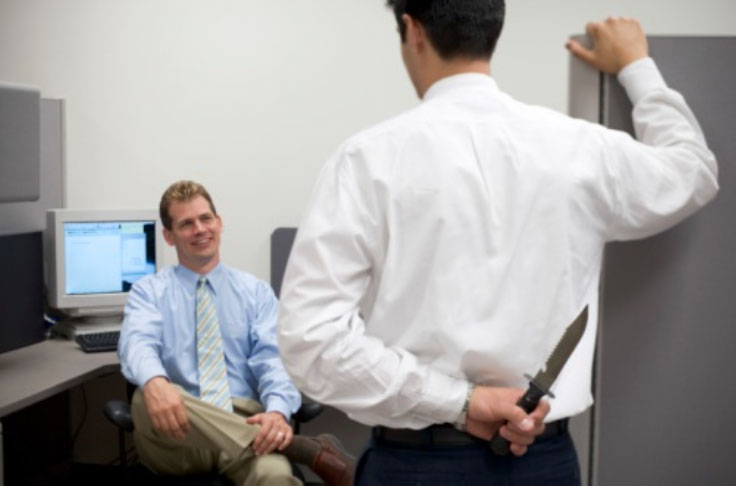 In business (and relationships), there tends to be passive agreement in the form of the unwritten rules of civility. Culturally, there may be variations. Nonetheless, they exist. Solomon and Flores (p.4.) refer to this process as “cordial hypocrisy: the strong tendency of people in organizations, because of loyalty or fear, to pretend that there is trust when there is none, being polite in the name of harmony when cynicism and distrust are active poisons, eating away at the very existence of the organizations.” We frequently refer to these as the cultural dynamics of the organization. A cliche that reflects the cultural dynamics of organizational trust is captured in the phrase knowing the unwritten rules of “what feeds or eats you”. Knowing the difference matters in terms of survival; and, in such situations, there is a pre-judged process of how to make meaning of what to trust or to distrust. Moreover, the shared perception is that there is no choice to individually decide. This leads to organizational and executive shadow behavior.
In business (and relationships), there tends to be passive agreement in the form of the unwritten rules of civility. Culturally, there may be variations. Nonetheless, they exist. Solomon and Flores (p.4.) refer to this process as “cordial hypocrisy: the strong tendency of people in organizations, because of loyalty or fear, to pretend that there is trust when there is none, being polite in the name of harmony when cynicism and distrust are active poisons, eating away at the very existence of the organizations.” We frequently refer to these as the cultural dynamics of the organization. A cliche that reflects the cultural dynamics of organizational trust is captured in the phrase knowing the unwritten rules of “what feeds or eats you”. Knowing the difference matters in terms of survival; and, in such situations, there is a pre-judged process of how to make meaning of what to trust or to distrust. Moreover, the shared perception is that there is no choice to individually decide. This leads to organizational and executive shadow behavior.
Authentic trust goes beyond our experience and perceptions of benevolence, integrity, competence, and predictability. It is always about the relationship between individuals and how we choose to hold the person (+/-) and to make meaning of events. In short, “we make decisions to trust. We make promises and tacit commitments. We see them through. We come to have expectations of others, and we respond to the fulfillment and frustration of those expectations. Trust is not something we ‘have’ or a medium or an atmosphere within which we operate. Trust is something we do, something we make. Our mutual choices of trust determine nothing less than the kinds of beings we are and the kinds of lives we will live together.” It begins with trusting our self.
An Example
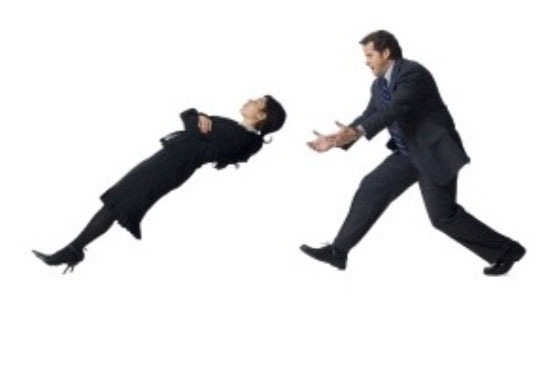 An executive struggled between being a hard charging, directive wielding and punishing individual and a sincere and supportive leader. Under duress, the less stellar behaviors were often released whereas the more supportive individual appeared when the performance was deemed according to executive expectations. Cordial hypocrisy seeped throughout the organization.
An executive struggled between being a hard charging, directive wielding and punishing individual and a sincere and supportive leader. Under duress, the less stellar behaviors were often released whereas the more supportive individual appeared when the performance was deemed according to executive expectations. Cordial hypocrisy seeped throughout the organization.
After a careful discussion of the behavioral elements of trust and distrust–benevolence, integrity, competence, and predictability (see February Newsletter), it became clear that the client simply saw these as behaviors that might lead to increasing the perception of trust if he so chose to enact them. I also realized that he had no understanding that trust is relational and that he had an active responsibility to chose to trust or not and more over to be responsible for his contribution to whether or not the relationships within the organization were defined by trust or distrust. He believed that he had eminent trust from the fact that he held his executive position. Regardless of his behavior or his untested for reasonableness expectations, he believed he had no responsibility to make or create trust in the organization.
 Not all things end well. It became clear that the client simply viewed himself as a tool from which to manipulate behavior towards the maximum performance and his bonus attainment.
Not all things end well. It became clear that the client simply viewed himself as a tool from which to manipulate behavior towards the maximum performance and his bonus attainment.
In time, morale declined to the point that it was clear that something had to change. He advocated trust throughout the organization while never practicing trusting behaviors or trust relationship building. The board recognized that the lack of trust was at the epicenter of the organization. Instead of a change-out of the executive, the organization was re-organized to shake-things-up and hopefully reform as a more trusting dynamic. No longer able to impact the executive with his new focus, I closed the relationship and moved on. Some clients are unable to change or to see that they are the problem.
Reflections
In retrospect, I realized that I had insufficient understanding of how to create personal awareness for the client surrounding how he was impacting trust with the organization and moreover how he was not trusting the organization to be able to be a high performing and self sustaining. I was not clear within myself how to explain what is trust and that we create, make, and be it when consciously being present to the person, situation, or crisis.
What is a consciously aware Trust1
Assuming a fully present, consciously aware coaching or leadership stance, I began to explore what is trust. I came to understand that authentic trust--
- will support us to avoid an unnecessary narrowing of focus and initiation of distrust by assuming that trust is predominantly a risk/reward dynamic. Rather, authentic trust is self-determined and tends to open greater awareness of more options than simply to move toward distrust.
 is the result of continuous individual attentiveness and activity even though it often recedes into the background of awareness until thrust forward when it feels or is challenged or violated. The lack of constant awareness that we build relationships of which trust is an evolving component results in the constant shock and surprise when one of our assumptions is burst like a bubble touching a blade of grass. Trust is our meaning-making process of the untested assumptions we make about relationships.
is the result of continuous individual attentiveness and activity even though it often recedes into the background of awareness until thrust forward when it feels or is challenged or violated. The lack of constant awareness that we build relationships of which trust is an evolving component results in the constant shock and surprise when one of our assumptions is burst like a bubble touching a blade of grass. Trust is our meaning-making process of the untested assumptions we make about relationships.- is not the glue that holds a relationship or organizations together. Rather trust is dynamic and is actually part of the vitality of relationships because it involves personal responsibility, commitment, and the constant change within an evolving relationship or organization. (Unearned loyalty is often confused with trust and is the case with the above client that felt he was bequeathed trust from the nature of his position.)
- is a social practice, not a set of beliefs. It is a conscious awareness and initiative to “how to” trust, instead of “knowing that” someone or something is trusting or trust worthy.
- evolves. How we think about trust makes it (trust) possible, difficult, or impossible. Not thinking about and managing our meaning-making processes leads to be shocked by an unshared assumption being revealed.
 thinking and talking about trust will not only influence our beliefs, but change our behavior with each other and within the organization. By being fully present and aware of our internal experience and the dynamics in the relationship, our internal reactions tend to indicate where and how to make meaning of the situation and more importantly where we might have disagreement.
thinking and talking about trust will not only influence our beliefs, but change our behavior with each other and within the organization. By being fully present and aware of our internal experience and the dynamics in the relationship, our internal reactions tend to indicate where and how to make meaning of the situation and more importantly where we might have disagreement.- involves breaches of trust that do not demarcate the end of trust and the relationship. Often, it is the sense of distrust that might only be a mistake or misunderstanding that warrants conscious consideration. Furthermore, it might simply be a cultural difference in how each perceives a situation, thereby revealing unexamined assumptions.
- is both earned and must be given for it to survive in a relationship or organization. Therefore, trust involves a consciously reciprocal relationship that does not revolve exclusively around prediction, risk, and reliance. Rather, it is developed by staying fully present in the worst of perceived “betrayals” or “disagreements” in order to reveal the angst in the situation.
- involves sincerity, authenticity, integrity, virtue, and honor. It is not a ‘neutral’ character trait, not just a cultural pattern in organization (or relationship) and not a matter of ‘good judgement’ about others. It is a matter of conscientious integrity within the relationship or organization depicted as the courage to stay fully present and engaged.
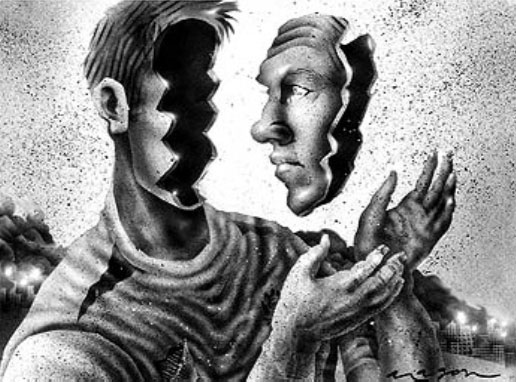 is lost in the lack of self-trust. Distrust often is a projection of our distrust of our self. This can surface as cynicism, selfishness, and naivete in which one expects to get more than one is willing to give. Resentment, distrust, and inauthenticity are the result. If blaming others is the normal reaction, self-trust is missing.
is lost in the lack of self-trust. Distrust often is a projection of our distrust of our self. This can surface as cynicism, selfishness, and naivete in which one expects to get more than one is willing to give. Resentment, distrust, and inauthenticity are the result. If blaming others is the normal reaction, self-trust is missing.- can never be taken for granted, but must constantly be cultivated through sincere commitments, and sincere truthfulness. It literally requires presence, ours' as coaches, and the leaders' as executives.
Return to the Client
As I further reflected on the client, I realized that his focus of command and control drove all of his behavior. As such, he saw trust only as a control mechanism, maybe another tool, for his directive wielding approach. He could not conceive that increasing trust does not increase control. Nor could he grasp that by easing the reins of control, it improves efficiency, effectiveness, cooperation, team spirit, employee morale, and the chances for success in an increasingly competitive world. (Solomon & Flores, 22.) Rather, he saw empowerment as his ability to hold others responsible by quickly blaming them for either failing or misunderstanding the directive. Trust requires real authority and autonomy to perform well. He could not confer either authority or autonomy.
My Take-Aways
In this case, I am not sure if there was a way to be successful in moving the client from a command and control to a supportive and trust-creating awareness. With a board that supported the command and control process by quickly reorganizing to disrupt poor morale and distrust, the culture might have been too resistant to any shifts in perspective. Nonetheless, it has taught me to explore the degree of trust that exists within the relationship and organization and well as determine if the client is willing to consider and then integrate that s(he) is responsible for actively creating trust.
References
Robert C. Solomon & Fernando Flores, Building Trust: In Business, Politics, Relationships, & Life. Oxford University Press, 2001
1 Adapted from Solomon & Flores.
Executive & Life Coaching:
A Journey into Advanced Skill Building
October 18-23, 2015
Punderson State Park, Cleveland Ohio
 Executive & Life Coaching: A Journey into Advanced Skill Building is a “coming- home” experience for those seeking to build upon their existing coaching skills. It is an indepth experience steeped in personal growth through self awareness and professional development through a refinement of your coaching/consulting skills. Though based in gestalt/ontological theory, the core concepts will be “use of self”, “presence” and “paradoxical theory of change” which permeate many coaching philosophies. In addition, we will include a form of peer coaching that is gaining momentum as a leader development process as well as a team development process.
Executive & Life Coaching: A Journey into Advanced Skill Building is a “coming- home” experience for those seeking to build upon their existing coaching skills. It is an indepth experience steeped in personal growth through self awareness and professional development through a refinement of your coaching/consulting skills. Though based in gestalt/ontological theory, the core concepts will be “use of self”, “presence” and “paradoxical theory of change” which permeate many coaching philosophies. In addition, we will include a form of peer coaching that is gaining momentum as a leader development process as well as a team development process.
Intensive
Executive & Life Coaching: A Journey into Advanced Skill Building is an intensive experience that requires a commitment to expand your knowledge and practice. This translates into an extensive manual of original writings from my 30 years of executive coaching and consulting. In addition, supporting articles that influenced the writings will be available to further deepen your practice knowledge. In short, reading to deepen will support your process.
Know-Do Gap
Robert Sutton coined the phrase, the “know-do gap” to explain that to fully embrace new learning it requires increasing the knowledge base (know) and then directly applying it through various practical experiences (do). As such, the workshop will be a mix of learn a little then do a little.
 Maximizing Your Experience
Maximizing Your Experience
Many coaching workshop experiences are viewed as learn a little from the teaching at the workshops and do a lot, with the emphasis on not reading in advance. Attendees are strongly encouraged to complete the readings in advance to maximize the experience by eliminating the Know-Do gap. If you decide to skip the readings until after the workshop, it will reduce your overall experience, but not be a deterrent to your learning.
Foundational Assumptions
We will be working in a field of energy. Hence the field phenomena will constantly impact every one. As we become more present, our capacity to have a refined form of “seeing” the various models will occur. Being open to new ways to perceive is an important aspect of the program.
We also will be impacting each other. Hence, we will be practicing the learn, apply, learn, do, learn, apply aspect of action learning/research. This can cause some discomfort, however its assumed that to learn, we must lean into our discomfort.
Taking Care of You
Each morning there will be the choice to do a walkabout on the beautiful land of the Punderson Park or to do your personal Yoga or to do a quiet reflective time near the lake. It is imperative that you grant yourself the time to rejuvenate while at this workshop. We encourage you to unplug from work if at all possible.
Assessments
There are several assessments that will need to be completed prior to arriving. The first is a detailed reflective process that will support your understanding of how you are coming into the workshop. If you do the Monday night optional class, it will be an absolute necessity. In addition it will be part of the Sunday night opening of the circle.
You will also be provided information for competing the MBTI Step 2, Form Q, the Thomas Kilmann Conflict Instrument, and the FIRO-Business. These are important as you will use class time to build your individual development plan to be implemented when you return to your practice.
The individual development plan is a reflective tool to increase your application and learning from the workshop. You are encouraged to work on it in the open evenings
 Professional Requirements
Professional Requirements
Participants will be supported by having completed a Gestalt or ontologically based coaching/consulting or therapy certification program or one or more intensive Gestalt or Ontological OD experience(s) that consisted of at least 15 classroom days in length prior to coming to this workshop. Basic gestalt concepts will not be reviewed in this intensive program. If you are unsure, please contact us for clarification or complete the application from which a decision will be made.
Limited Size
To maximize your experience, the class is limited to 16 advanced participants.

Facilities
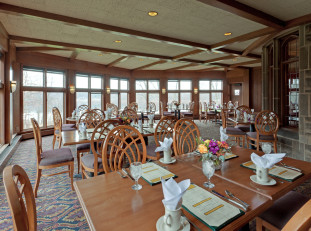 The workshop will be at the Punderson State Park near Cleveland in Newbury, OH 44065. It is located on rolling hills overlooking the Punderson Lake with many hiking trails. There is a wonderful restaurant and bar for dining and after-hours enjoyment.
The workshop will be at the Punderson State Park near Cleveland in Newbury, OH 44065. It is located on rolling hills overlooking the Punderson Lake with many hiking trails. There is a wonderful restaurant and bar for dining and after-hours enjoyment.
Room Reservations
Rooms have been reserved for this workshop. Please indicate “Coaching Workshop” to get the reduced rate per night for in the Manor. The room rates includes breakfast and lunch for every day. For those wanting time with friends, there are cabins for 2-4 people. Contact Punderson directly at (440) 564-9144.
Transportation
It is approximately a one-hour trip to Punderson from either the Cleveland Hopkins or the Akron/Canton airports. Rental cars are available at the airports or there is an excellent Limo service. Contact SHIMA LIMOUSINE SERVICE, INC., 7555 Tyler Blvd #12, Mentor OH 44060. Phone: 440-918-6400, Email: info@shimalimo.com. I suggest coordinating and sharing rides.
Fees
The fee for Executive & Life Coaching: A Journey into Advanced Skill Building including all materials is $2900.00. There is a $400 discount if paid in full by March 1st for the Spring workshop, or September 1st for the Fall workshop. Make checks payable and mail with your application to Cleveland Consulting Group, Inc., 9796 Cedar Road, Novelty, Ohio 44072-9747.
Presenter
Herb Stevenson will facilitate the workshop.
Drinking from the Talent Well
Due to the highly talented nature of the participants, we will draw upon each other to deepen the learning.
Course Topics
Pertinent pre-reading can be done by using the link to the website.
Register Now
To keep the world from closing in on you,
do one thing every day that is uncomfortable,
dislike-able or unnerving.
“One must still have chaos in oneself
to be able to give birth
to a dancing star”
—Nietzsche
Anxiety tests our courage to stand alone,
our courage to be part of a larger whole
such as a family or community or organization,
and the courage to be responsible
to the whole of creation,
including all that is of or on the earth.

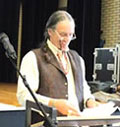
 In business (and relationships), there tends to be passive agreement in the form of the unwritten rules of civility. Culturally, there may be variations. Nonetheless, they exist. Solomon and Flores (p.4.) refer to this process as “cordial hypocrisy: the strong tendency of people in organizations, because of loyalty or fear, to pretend that there is trust when there is none, being polite in the name of harmony when cynicism and distrust are active poisons, eating away at the very existence of the organizations.” We frequently refer to these as the cultural dynamics of the organization. A cliche that reflects the cultural dynamics of organizational trust is captured in the phrase knowing the unwritten rules of “what feeds or eats you”. Knowing the difference matters in terms of survival; and, in such situations, there is a pre-judged process of how to make meaning of what to trust or to distrust. Moreover, the shared perception is that there is no choice to individually decide. This leads to organizational and executive shadow behavior.
In business (and relationships), there tends to be passive agreement in the form of the unwritten rules of civility. Culturally, there may be variations. Nonetheless, they exist. Solomon and Flores (p.4.) refer to this process as “cordial hypocrisy: the strong tendency of people in organizations, because of loyalty or fear, to pretend that there is trust when there is none, being polite in the name of harmony when cynicism and distrust are active poisons, eating away at the very existence of the organizations.” We frequently refer to these as the cultural dynamics of the organization. A cliche that reflects the cultural dynamics of organizational trust is captured in the phrase knowing the unwritten rules of “what feeds or eats you”. Knowing the difference matters in terms of survival; and, in such situations, there is a pre-judged process of how to make meaning of what to trust or to distrust. Moreover, the shared perception is that there is no choice to individually decide. This leads to organizational and executive shadow behavior. An executive struggled between being a hard charging, directive wielding and punishing individual and a sincere and supportive leader. Under duress, the less stellar behaviors were often released whereas the more supportive individual appeared when the performance was deemed according to executive expectations. Cordial hypocrisy seeped throughout the organization.
An executive struggled between being a hard charging, directive wielding and punishing individual and a sincere and supportive leader. Under duress, the less stellar behaviors were often released whereas the more supportive individual appeared when the performance was deemed according to executive expectations. Cordial hypocrisy seeped throughout the organization. Not all things end well. It became clear that the client simply viewed himself as a tool from which to manipulate behavior towards the maximum performance and his bonus attainment.
Not all things end well. It became clear that the client simply viewed himself as a tool from which to manipulate behavior towards the maximum performance and his bonus attainment. is the result of continuous individual attentiveness and activity even though it often recedes into the background of awareness until thrust forward when it feels or is challenged or violated. The lack of constant awareness that we build relationships of which trust is an evolving component results in the constant shock and surprise when one of our assumptions is burst like a bubble touching a blade of grass. Trust is our meaning-making process of the untested assumptions we make about relationships.
is the result of continuous individual attentiveness and activity even though it often recedes into the background of awareness until thrust forward when it feels or is challenged or violated. The lack of constant awareness that we build relationships of which trust is an evolving component results in the constant shock and surprise when one of our assumptions is burst like a bubble touching a blade of grass. Trust is our meaning-making process of the untested assumptions we make about relationships. thinking and talking about trust will not only influence our beliefs, but change our behavior with each other and within the organization. By being fully present and aware of our internal experience and the dynamics in the relationship, our internal reactions tend to indicate where and how to make meaning of the situation and more importantly where we might have disagreement.
thinking and talking about trust will not only influence our beliefs, but change our behavior with each other and within the organization. By being fully present and aware of our internal experience and the dynamics in the relationship, our internal reactions tend to indicate where and how to make meaning of the situation and more importantly where we might have disagreement. is lost in the lack of self-trust. Distrust often is a projection of our distrust of our self. This can surface as cynicism, selfishness, and naivete in which one expects to get more than one is willing to give. Resentment, distrust, and inauthenticity are the result. If blaming others is the normal reaction, self-trust is missing.
is lost in the lack of self-trust. Distrust often is a projection of our distrust of our self. This can surface as cynicism, selfishness, and naivete in which one expects to get more than one is willing to give. Resentment, distrust, and inauthenticity are the result. If blaming others is the normal reaction, self-trust is missing. Executive & Life Coaching: A Journey into Advanced Skill Building is a “coming- home” experience for those seeking to build upon their existing coaching skills. It is an indepth experience steeped in personal growth through self awareness and professional development through a refinement of your coaching/consulting skills. Though based in gestalt/ontological theory, the core concepts will be “use of self”, “presence” and “paradoxical theory of change” which permeate many coaching philosophies. In addition, we will include a form of peer coaching that is gaining momentum as a leader development process as well as a team development process.
Executive & Life Coaching: A Journey into Advanced Skill Building is a “coming- home” experience for those seeking to build upon their existing coaching skills. It is an indepth experience steeped in personal growth through self awareness and professional development through a refinement of your coaching/consulting skills. Though based in gestalt/ontological theory, the core concepts will be “use of self”, “presence” and “paradoxical theory of change” which permeate many coaching philosophies. In addition, we will include a form of peer coaching that is gaining momentum as a leader development process as well as a team development process.  Maximizing Your Experience
Maximizing Your Experience Professional Requirements
Professional Requirements
 The workshop will be at the
The workshop will be at the